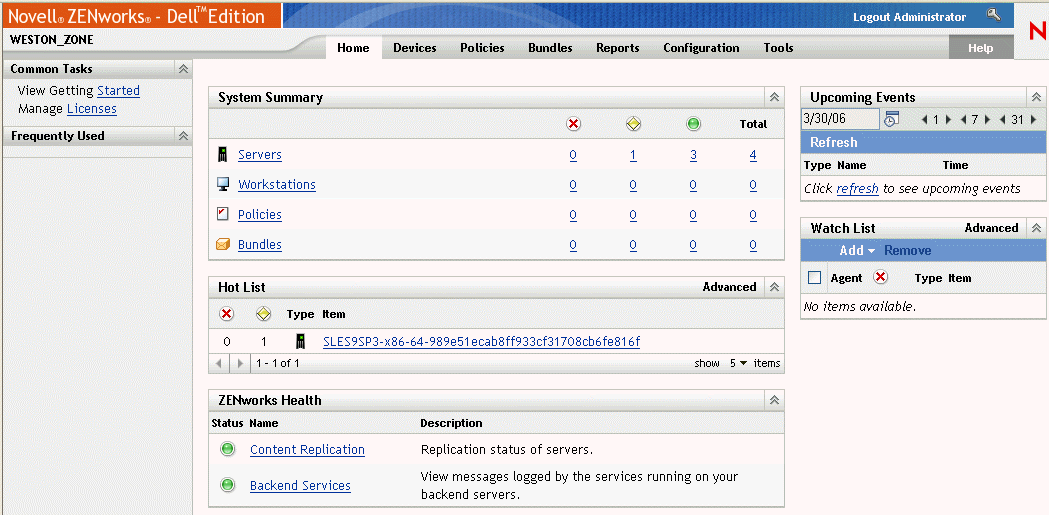1.3 System Administration
The ZENworks system is administered at the Management Zone level through the ZENworks Control Center, a task-based Web browser console.
Figure 1-2 ZENworks Control Center

The ZENworks Control Center is installed on all ZENworks Servers in the Management Zone. You can perform all management tasks on the Primary Server and most management tasks on the Secondary Servers. The one management exception on Secondary Servers is the manipulation (adding, deleting, modifying) of RPM or Dell Update Packages in a bundle. This task is not supported because the Primary Server is the source server for packages, meaning that packages are replicated from the Primary Server to Secondary Servers on a regularly scheduled basis. Manipulating a package on a Secondary Server rather than on the Primary Server would result in the modified package being replaced (or removed) the next time the Secondary Server’s packages were updated from the Primary Server.
If you use Novell iManager to administer other Novell products in your network environment, you can enable the ZENworks Control Center to be launched from iManager. For details, see ZENworks Control Center
in the Novell ZENworks 7.3 Linux Management Administration Guide.
In addition to the ZENworks Control Center, you can use a command line utility, zlman, to manage the objects in your ZENworks system. For example, you can add packages to bundles, associate policies with devices, register devices, and assign administrator rights. The main advantage to using the command line utility is the ability to create scripts for handling repetitive or mass operations.
Like the ZENworks Control Center, the zlman utility is installed on all ZENworks Servers. It has the same management restriction as the ZENworks Control Center, meaning that you should not use it to manipulate packages on Secondary Servers. For more information about zlman, see Command Line Administration Utilities
in the Novell ZENworks 7.3 Linux Management Administration Guide.